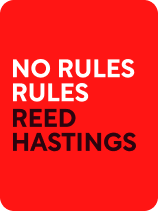

This article is an excerpt from the Shortform book guide to "No Rules Rules" by Reed Hastings. Shortform has the world's best summaries and analyses of books you should be reading.
Like this article? Sign up for a free trial here .
What are group dynamics for teams? How important are the dynamics of a team for improving overall performance?
Group dynamics for teams can be challenging because of the complex ways in which individual members can interact. In particular, performance quality can be compromised without the right team dynamics in the workplace.
Keep reading for important tips to enhance group dynamics for teams.
Group Dynamics for Teams: Performance Quality
Painful layoffs forced Hastings to learn a lesson that research has proven: Performance—whether good or bad—is contagious. Hastings hadn’t realized that part of the group dynamics for teams. Before the layoffs, the mere presence of adequate employees had been dragging down the performance of his entire team. On a team of high performers, just one or two mediocre workers can have adverse effects on team dynamics in the workplace:
- They reduce efficiency by forcing others to find ways of working around their less-than-stellar performance.
- They bring down the quality of group discussion.
- They take managers’ energy and attention away from top performers.
- They cause the team to produce lower-quality work, which causes some high-performing employees to quit out of frustration.
- Their presence sends a message to everyone else that company leaders condone mediocrity, which reduces motivation and performance across the board.
One study on group dynamics for teams showed that a single low performer brings an entire team’s productivity down by 30 to 40 percent. In the experiment, college students were grouped in teams of four to perform a task in 45 minutes—but the students didn’t know that each team included an actor who was assigned to play the role of a jerk, a slacker, or a depressive pessimist. Regardless of the talents of the rest of the group, by the end of the session, each team had adopted the attitude of its bad apple: The jerk’s teammates were insulting each other, the slacker’s teammates had given up on the task, and the pessimist’s teammates had deflated and lay their heads down on their desks.
By contrast, as Hastings discovered, a team full of highly talented people pushes everyone’s performance up. Hastings vowed to hire only the best employees, and, in Chapters 4 and 7, we’ll discuss how he reinforced this principle by paying top dollar to keep great employees and training managers to identify and let go of anyone—from receptionists to executives—who fell below that standard. To cultivate the adaptive, innovative culture Netflix needed, Hastings created a high-performing workforce that provided the foundation for the following practices we’ll discuss.
Exercise: Reflect on Your Team Dynamics in the Workplace
How does your teammates’ competence impact the quality of your work?
- Briefly describe your most recent team project.
- How many of your teammates would you consider high performers, and how many would you consider mediocre or worse?
- Describe the high performers’ impact on the team’s performance.
- Describe the mediocre teammates’ influence on the project.
- How do you think the project would have turned out differently if everyone on the team was high-performing?
Live 360-Degree Reviews
Hastings saw that the biggest benefit of the written 360s were the discussions that grew out of the written comments, so he implemented face-to-face 360-degree reviews. These can enhance group dynamics for teams. In a live 360, a manager and her team gather for several hours and go around the room as each employee takes a turn receiving feedback. This format has multiple benefits:
- It provides insight into the interpersonal dynamics of the team as a whole by enabling everyone to hear teammates’ comments to each other. If one person offers a suggestion, someone else can dispute or build on it, and the person receiving the feedback gets a sense of how she may be effective in one context but need improvement in another area.
- Each employee becomes more accountable to her team, which improves the team’s overall effectiveness and collaboration. This also reinforces the principle of acting in the best interest of the company instead of merely trying to please the boss.
Even if you’re acclimated to the company’s culture of candor, fielding constructive criticism from your entire team in front of your entire team can be daunting. This can be challenging depending on the group dynamics for teams. However, no one aims to attack or embarrass their teammate—especially because they’ll also have a turn on the hot seat. The culture of candor and accountability also ensures that employees will call out a coworker whose comments are out of line. Although some employees still see the process as uncomfortable and potentially embarrassing, if they can be receptive to comments and avoid getting defensive, the feedback could save them from failing a future Keeper Test.

———End of Preview———
Like what you just read? Read the rest of the world's best book summary and analysis of Reed Hastings's "No Rules Rules" at Shortform .
Here's what you'll find in our full No Rules Rules summary :
- How Netflix achieved massive success in a short period of time
- The unusual business practices that have helped Netflix sustain its success
- Why Netflix fires adequate employees






